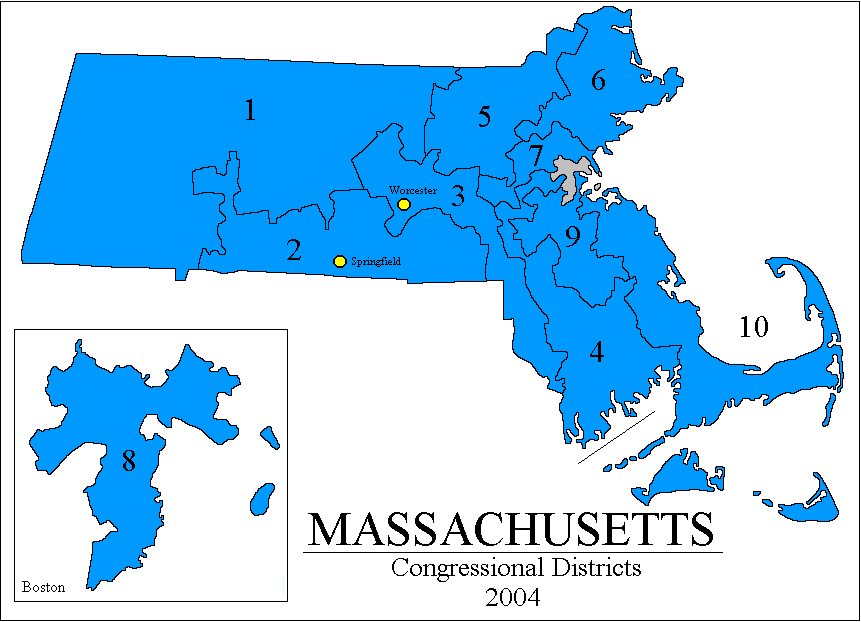
This image shows the congressional districts of the Commonwealth of Massachusetts
This has been a US practice since inception but sometimes this could lead to a decrease in political participation from citizens. In a study done by Hayes and McKee, from American University and the University of South Florida respectively, it was seen that redistricting sometimes had a negative effect of political participation from minorities. Many time voters who have been redrawn find themselves in a congressional district in which they become a minority drastically. An example might be that an African American couple who have been redrawn to now live in a predominantly white congressional district may not cast a ballot at all. This has been noticed in many precincts following redistricting from the 2010 US census. The findings from this research has identified that African Americans are affected the most when it comes to redistricting and a decrease in votes casted. However, using historical information regarding these congressional races it was noticed that blacks who were redistricted into a black incumbents district then voting percentage went up.
Now what drives these trends? A lot of times, many voters are run off voters who vote for the top of the ballot race but do not continue through the rest of the ballot therefore not always voting for gubernatorial races. These individuals who are run off voters tend to be SES voters. SES stands for socioeconomic status and is vital to look at because individuals with low SES tend to be less educated and are less interested and less knowledgeable of other ballot races. Hayes and McKee found that this is a reason that African American vote less frequently then whites.
It is curious to see how these elections fold out as the US citizens tend to be upset with the way the government is operating. Elections are important! All the races on the ballots are important as well. Be sure to read through all of them when election day comes. Also, redistricting has always been a controversial topic. It is important to keep an eye on how that potentially changes the voting regions of the US.
Hayes' and McKee's research can be found here: http://home.gwu.edu/~dwh/intersection.pdf
Image found at: http://rangevoting.org/GerryExamples.html
It's super important to remain aware of changes in voting structure. Reshaping of voting districts is one of the most potent ways to devalue the power of a citizen's vote short of outright restricting someone from the ability to vote at all. In recent years voter history has shown that when properly motivated voter turnout can reach record heights and influence, as eligible voters we have to be aware of how that power can be infringed upon and protect it.
ReplyDelete